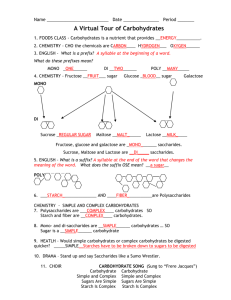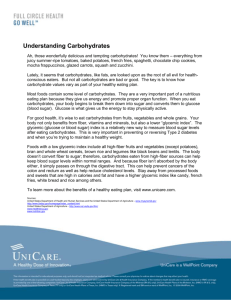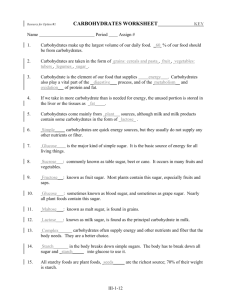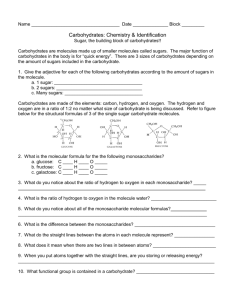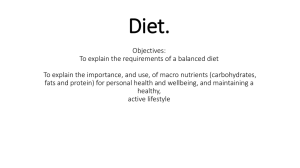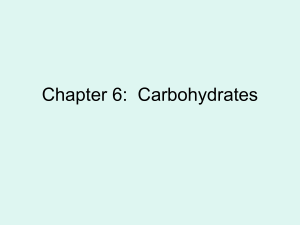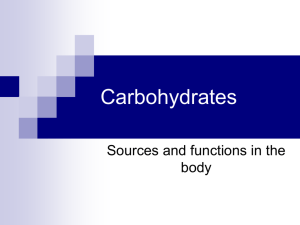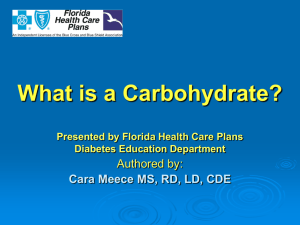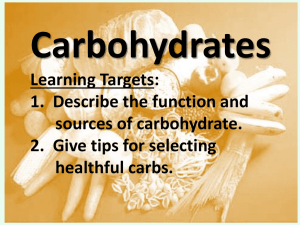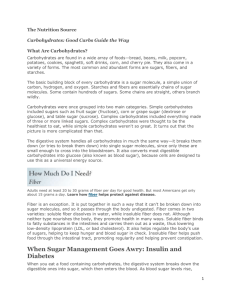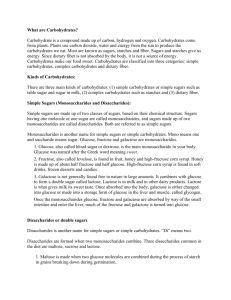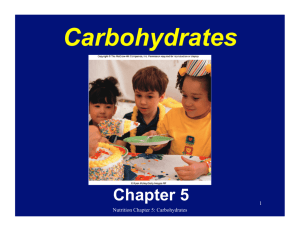Carbohydrates
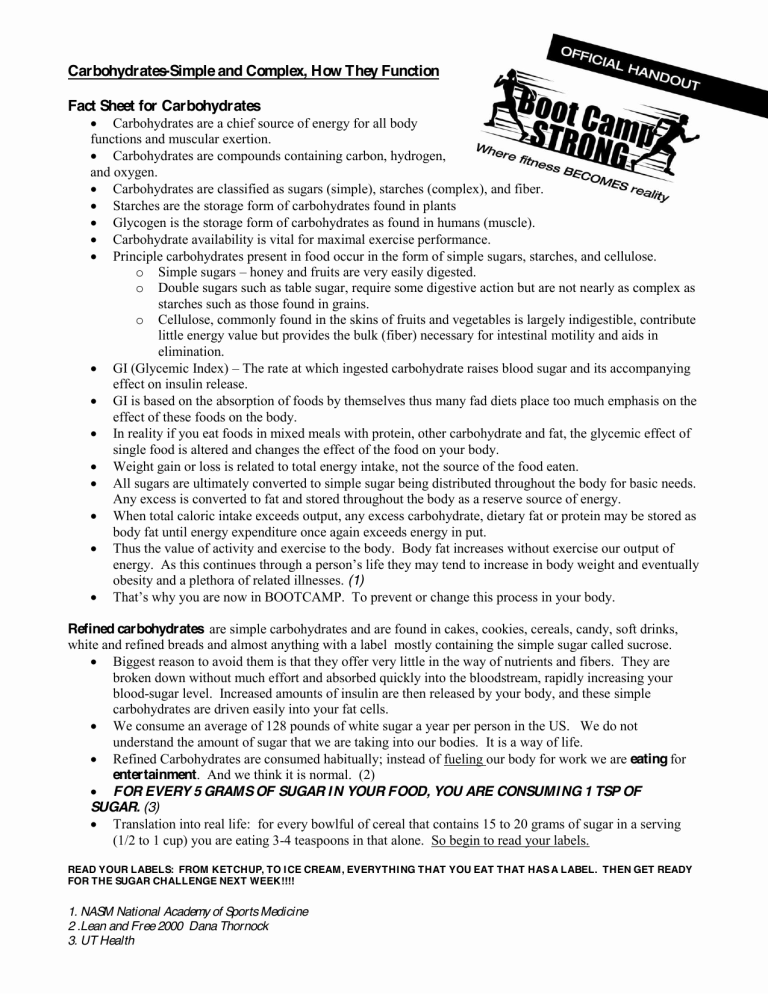
Carbohydrates-Simple and Complex, How They Function
Fact Sheet for Carbohydrates
x Carbohydrates are a chief source of energy for all body functions and muscular exertion. x Carbohydrates are compounds containing carbon, hydrogen, and oxygen. x Carbohydrates are classified as sugars (simple), starches (complex), and fiber. x Starches are the storage form of carbohydrates found in plants x Glycogen is the storage form of carbohydrates as found in humans (muscle). x Carbohydrate availability is vital for maximal exercise performance. x Principle carbohydrates present in food occur in the form of simple sugars, starches, and cellulose. o Simple sugars ± honey and fruits are very easily digested. o Double sugars such as table sugar, require some digestive action but are not nearly as complex as starches such as those found in grains. o Cellulose, commonly found in the skins of fruits and vegetables is largely indigestible, contribute little energy value but provides the bulk (fiber) necessary for intestinal motility and aids in elimination. x GI (Glycemic Index) ± The rate at which ingested carbohydrate raises blood sugar and its accompanying effect on insulin release. x GI is based on the absorption of foods by themselves thus many fad diets place too much emphasis on the effect of these foods on the body. x In reality if you eat foods in mixed meals with protein, other carbohydrate and fat, the glycemic effect of single food is altered and changes the effect of the food on your body. x Weight gain or loss is related to total energy intake, not the source of the food eaten. x All sugars are ultimately converted to simple sugar being distributed throughout the body for basic needs.
Any excess is converted to fat and stored throughout the body as a reserve source of energy. x When total caloric intake exceeds output, any excess carbohydrate, dietary fat or protein may be stored as body fat until energy expenditure once again exceeds energy in put. x Thus the value of activity and exercise to the body. Body fat increases without exercise our output of energy. As this continues through a SHUVRQ¶V life they may tend to increase in body weight and eventually obesity and a plethora of related illnesses. (1) x 7KDW¶VZK\\RXDUHQRZLQ%227&$037RSUHYHQWRUF hange this process in your body.
Refined carbohydrates are simple carbohydrates and are found in cakes, cookies, cereals, candy, soft drinks, white and refined breads and almost anything with a label mostly containing the simple sugar called sucrose. x Biggest reason to avoid them is that they offer very little in the way of nutrients and fibers. They are broken down without much effort and absorbed quickly into the bloodstream, rapidly increasing your blood-sugar level. Increased amounts of insulin are then released by your body, and these simple carbohydrates are driven easily into your fat cells. x We consume an average of 128 pounds of white sugar a year per person in the US. We do not understand the amount of sugar that we are taking into our bodies. It is a way of life. x Refined Carbohydrates are consumed habitually; instead of fueling our body for work we are eating for entertainment . And we think it is normal. (2) x
FOR EVERY 5 GRAMS OF SUGAR I N YOUR FOOD, YOU ARE CONSUMI NG 1 TSP OF
SUGAR. (3) x Translation into real life: for every bowlful of cereal that contains 15 to 20 grams of sugar in a serving
(1/2 to 1 cup) you are eating 3-4 teaspoons in that alone. So begin to read your labels.
READ YOUR LABELS: FROM KETCHUP, TO I CE CREAM , EVERYTHI NG THAT YOU EAT THAT HAS A LABEL. THEN GET READY
FOR THE SUGAR CHALLENGE NEXT WEEK!!!!
1. NASM National Academy of Sports Medicine
2 .Lean and Free 2000 Dana Thornock
3. UT Health

